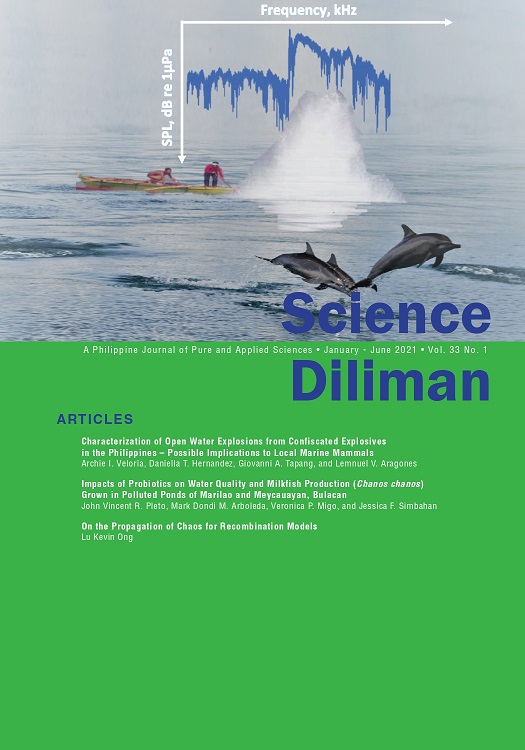Characterization of Open Water Explosions from Confiscated Explosives in the Philippines – Possible Implications to Local Marine Mammals
Abstract
Underwater noise poses serious threats to marine mammals, which rely on underwater sound primarily for communication, orientation and foraging. In this study, underwater noise from dynamite fishing was analyzed to infer possible effects on local marine mammals, particularly cetaceans. Simulated explosions were performed on 9 July 2018 using confiscated explosives from illegal fishers in San Fernando, La Union. The acoustic properties of blasts from single pulse explosions were characterized using sound recordings captured by a hydrophone. Dominant frequencies from the sound recordings showed that the noise generated by the explosions can be perceived by marine mammals sensitive to the auditory bandwidth of 7 Hz to 180 kHz. Blast charge weights were estimated to determine sound pressure levels generated by the explosions at varying distances from the source. These results imply that marine mammals within 150 m of the explosion will experience debilitating injuries (e.g., acoustic trauma, disorientation) even from a single pulse. By characterizing the acoustic properties of these local explosives, its potential impacts to local marine mammals and other marine organisms can be elucidated. These acoustic calculations can be further enhanced by considering backscattered waves and determining the actual chemical composition of these explosives.
Published
2021-06-30
How to Cite
VELORIA, Archie I. et al.
Characterization of Open Water Explosions from Confiscated Explosives in the Philippines – Possible Implications to Local Marine Mammals.
Science Diliman: A Journal of Pure and Applied Sciences, [S.l.], v. 33, n. 1, june 2021.
ISSN 2012-0818.
Available at: <https://journals.upd.edu.ph/index.php/sciencediliman/article/view/7756>. Date accessed: 01 sep. 2025.
Issue
Section
Articles
Keywords
marine mammals, cetaceans, underwater noise, underwater explosion, dynamite fishing, hydrophone
Submission of a manuscript implies: that the work described has not been published before (except in the form of an abstract or as part of a published lecture, review, or thesis); that it is not under consideration for publication elsewhere; that its publication has been approved by all co-authors, if any, as well as by the responsible authorities at the institute where the work has been carried out; that, if and when the manuscript is accepted for publication, the authors agree to the automatic transfer of the copyright to the publisher; that the manuscript will not be published elsewhere in any language without the consent of the copyright holders; that written permission of the copyright holder is obtained by the authors for material used from other copyrighted sources; and that any costs associated with obtaining this permission are the authors’ responsibility.



